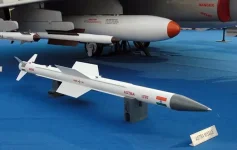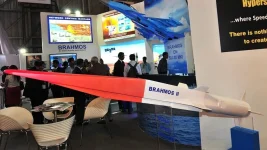- Views: 3K
- Replies: 17
India's premier defence research agency, the Defence Research and Development Organisation (DRDO), in collaboration with the Indian Air Force (IAF), is fast-tracking the creation of a new air-launched subsonic cruise missile.
This weapon is being developed from the existing Indigenous Technology Cruise Missile (ITCM) platform and aims to provide the IAF with a cost-effective solution for striking high-value targets deep within enemy territory from a safe distance.
The new missile system is being engineered to significantly enhance the IAF's long-range precision strike capabilities. It will be a strategic asset designed for deep-strike missions, with a projected range of 500 to 600 kilometres.
This capability allows fighter jets to engage crucial enemy infrastructure like command centres, airfields, and logistics hubs while remaining outside the coverage of most hostile air defence systems, thereby ensuring the safety of pilots and aircraft.
Derived from the land-based ITCM, the air-launched variant will undergo several critical modifications for aerial deployment.
A key change is the removal of the booster stage, which is essential for ground launches. When launched from an aircraft, the missile will use the jet's altitude and speed for its initial momentum.
The airframe is also being adapted for seamless integration with a wide array of the IAF's fighter fleet, including the Su-30 MKI, Rafale, MiG-29, and the indigenous Tejas aircraft, as well as the upcoming Advanced Medium Combat Aircraft (AMCA).
Development efforts are also focused on optimising the missile's design for air-launch efficiency.
The air intakes are being specifically redesigned to improve airflow to the indigenous Manik turbofan engine, which powers the missile. This compact engine is a product of DRDO's Gas Turbine Research Establishment (GTRE).
Furthermore, the missile's overall length will be shortened, ensuring its compatibility across the diverse weight classes of the IAF's combat aircraft.
Weighing approximately 1.2 tons, this subsonic cruise missile presents a different strategic option compared to the supersonic BrahMos-NG.
While BrahMos-NG, powered by a ramjet engine, achieves speeds of Mach 3.5 for rapid strikes, this new missile prioritizes affordability and range.
Its subsonic speed, powered by the fuel-efficient Manik engine, allows it to fly at low altitudes, hugging the terrain to evade enemy radar and air defences. This makes it a stealthy and precise weapon, guided by advanced systems including inertial navigation and satellite guidance.
This missile is envisioned as a complementary system to the faster BrahMos-NG, not a replacement. While the BrahMos is designed for time-sensitive, high-impact missions, the subsonic cruise missile will serve as a more economical choice for operations that require longer range and persistence.
Its significantly lower production cost will allow the IAF to procure it in larger quantities, diversifying its arsenal and providing greater operational flexibility.
Upon induction, this missile will mark a major milestone in India's pursuit of self-reliance in critical defence technologies.




